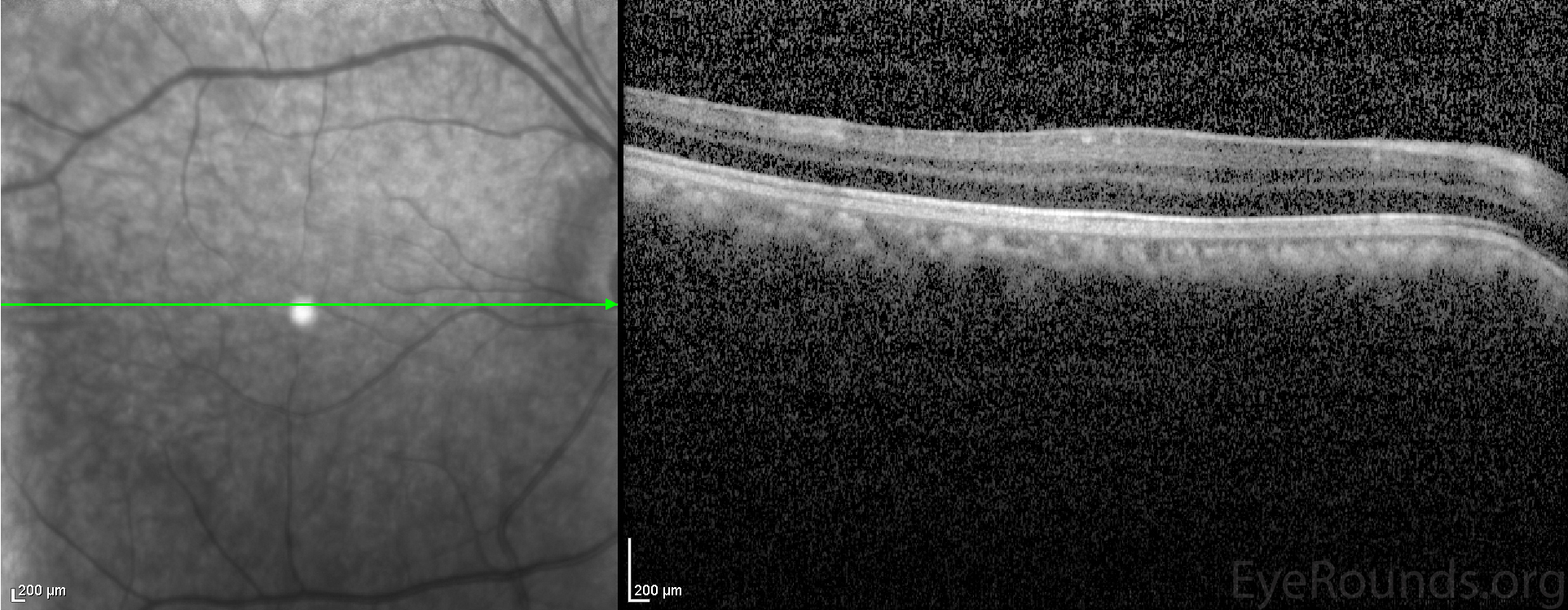
Congenital aniridia is a hereditary disease most commonly with autosomal dominant inheritance. These slit lamp photographs of a 17-year-old with aniridia show corneal pannus, subepithelial haze, and iris hypoplasia. There is fluorescein uptake of the pannus due to leaky intracellular junctions. The patient also has small anterior polar cataracts. The macular OCT shows absence of the normal foveal depression, consistent with foveal hypoplasia


Ophthalmic Atlas Images by EyeRounds.org, The University of Iowa are licensed under a Creative Commons Attribution-NonCommercial-NoDerivs 3.0 Unported License.